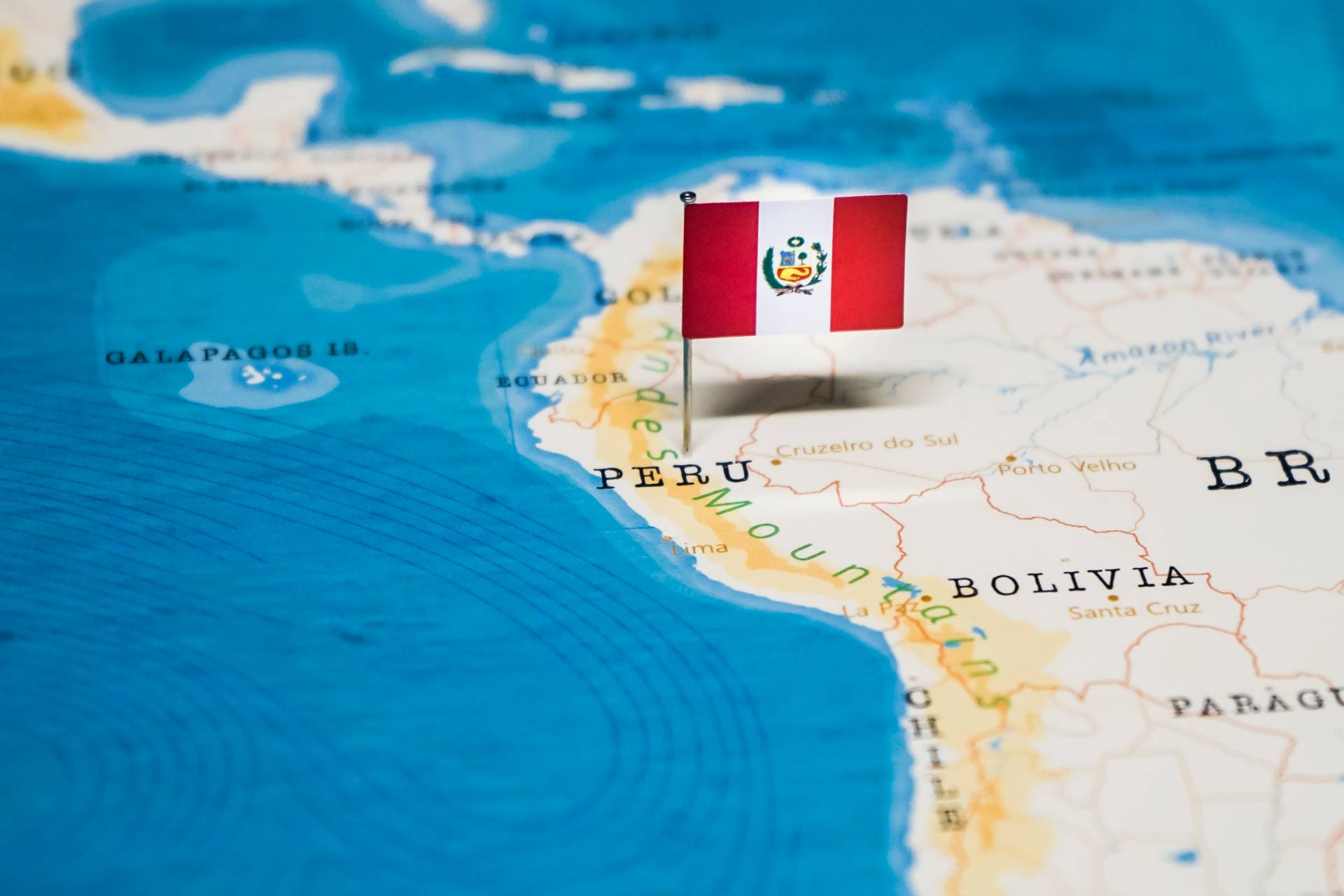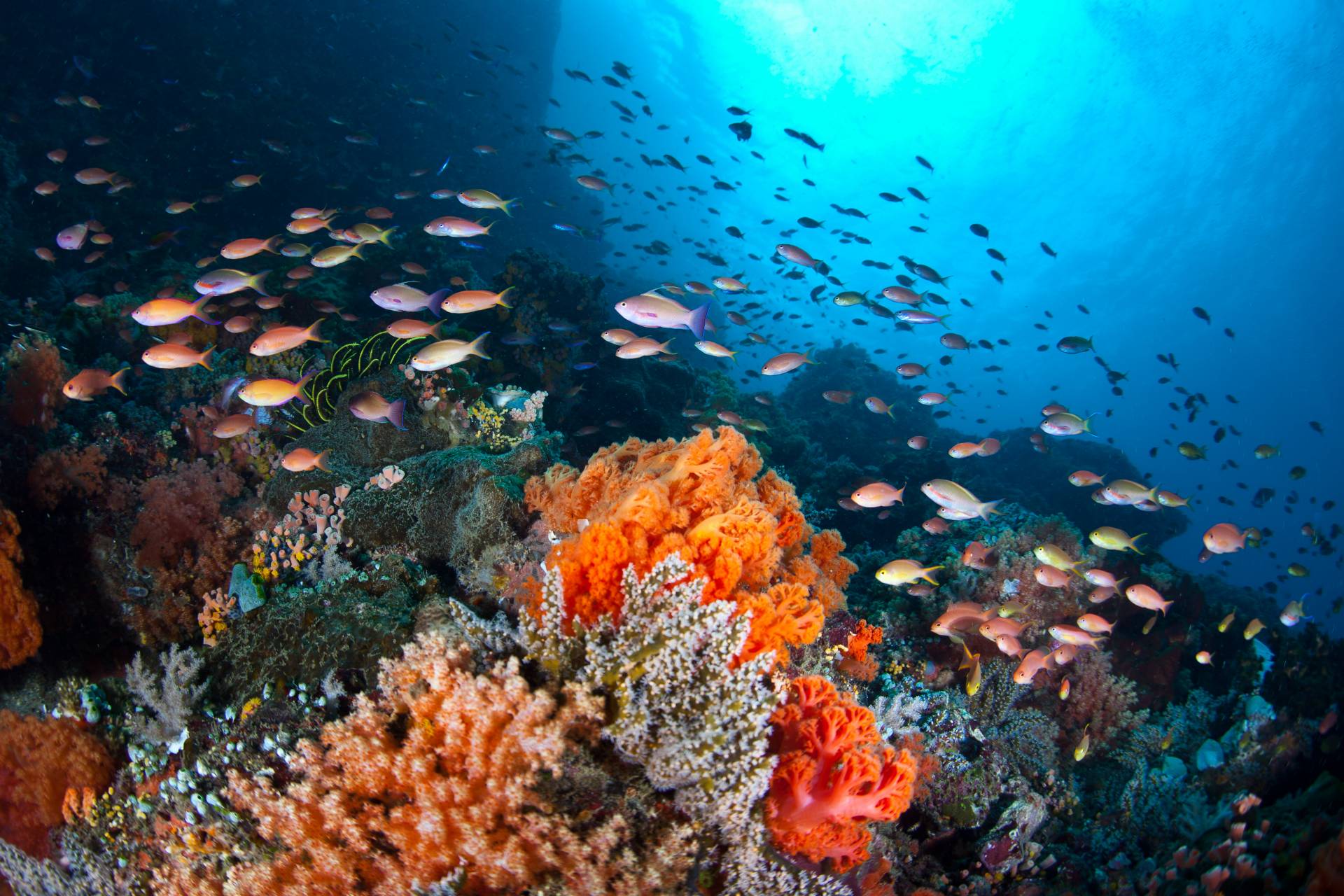Anne Earhart – Marisla Foundation

The ocean played an integral role in shaping the trajectory of Anne Earhart’s life. She spent her childhood visiting So Cal beaches and exploring the coast. Then, on a trip to Baja California, she experienced a life changing encounter with friendly gray whales. The breathtaking display planted the seeds for Ms. Earhart’s life’s calling, and indelibly marked the beginning of her journey to environmental philanthropy.
Her commitment to environmental causes gradually shaped the Marisla Foundation into a conservation powerhouse. Today, it provides substantial and consistent funding to more than 600 nonprofits, the majority with missions focused on addressing global environmental challenges.
Reflecting Ms. Earhart’s lifelong love of the ocean, Marisla has emerged as a particularly effective leader in marine conservation, working strategically to strengthen biodiversity and ecosystems and mitigate for pollution and overfishing impacts. Every year, Marisla Foundation supports more than 150 organizations working to protect healthy coasts and oceans. Through her efforts, she is helping to preserve access and stop water pollution and development impacts at some of the world’s epic surf spots, including in Mexico, Chile, Hawaii, and, of course, in her home of California.
Because saving the world’s oceans is too monumental an undertaking for a single foundation, Marisla has forged dynamic partnerships with other foundations committed to that cause. Together, with partners, Marisla created Oceana, the first major nonprofit committed to the restoration and protection of the world’s oceans. Thus far, Ms. Earhart’s philanthropy has helped preserve 4.5 million square miles (and counting) of ocean.
This extraordinary range of accomplishment places Anne Earhart prominently within the ranks of today’s great conservationists. And to this day, she finds her greatest joy in a simple day at the beach with her family and grandson, Finn (6 years).
OCEANA CALLS ON PERU
Oceana’s International Board of Directors call on President Sagasti of Peru to save the proposed Nasca Ridge National Reserve from destructive fishing
Provisions allowing fishing for Patagonian toothfish threaten to leave this critical habitat in need of protection as nothing more than a “paper park”
Press Release Date
Monday, March 15, 2021
Location: Washington, DC
Contacts:
Gillian Spolarich: gspolarich@oceana.org 202-467-1909
Alex Gray: agray@oceana.org 202-467-1914
Today, the members of Oceana’s International Board of Directors wrote the Hon. Francisco Sagasti Hochhausler, President of the Republic of Peru, to request the removal of an eleventh-hour provision to allow fishing for Patagonian toothfish in the proposed Nasca Ridge National Reserve. The bottom fishing methods used to catch Patagonian toothfish could damage the very seafloor and seamounts the Reserve is intended to protect. The government of Peru is soliciting public comments on the proposed Nasca Ridge National Reserve until March 22.
“Today, President Sagasti finds himself at a crucial juncture. This is his opportunity to define his legacy,” said Oceana board member César Gaviria, the former President of Colombia and former Secretary General of the Organization of American States. “He can correct this mistake and protect the world-famous abundance of Peru’s ocean, upon which so many Peruvians depend for their livelihoods. Otherwise, the special interests of a tiny fishery will prevail over the interests of the Peruvian people.”
Peru currently protects less than 0.5% of its ocean, far below the 10% goal to which the nation committed as a signatory of the 2020 Sustainable Development Goals and the Aichi Targets of the United Nations Convention on Biological Diversity. Peru’s amount of ocean territory protected also lags far behind that of neighboring countries (Ecuador protects 13% of its marine surface, and Chile, a world leader, has reached 42%). If properly implemented, the Nasca Ridge National Reserve would ensure the protection of almost 8% of Peru’s oceans.
“Our oceans in Chile and Peru are a source of not only wonder, but also of sustenance and livelihoods,” said Oceana board member Nicholas Davis, who is also Chairman of the Board of EuroAmerica and the founder of Fundación Punta de Lobos. “By investing in protecting our oceans and fish stocks, the communities who depend on them – and all of us – will receive much in return and for generations to come. I urge President Sagasti to invest in Peru’s oceans today by establishing a truly protected Nasca Reserve, not a paper park.”
The Patagonian toothfish fishery would encounter minimal impact being excluded from the reserve. Until 2019, only 6.3% of the toothfish catch from six vessels took place in the reserve. Eliminating fishing activity below 1,000 meters – the strict protection zone that has been defined for the reserve – is especially important to protect the seafloor and seamounts, which are the main conservation target of the Nasca Ridge National Reserve. Bottom longline fishing for Patagonian toothfish on seamounts had previously been deliberately excluded because it is inconsistent with this conservation objective. Furthermore, such activity is inconsistent with globally-accepted International Union for Conservation guidelines for protected areas and would render the Reserve a “paper park” – an area protected only in name.
“We at Oceana stood ready to celebrate the designation of the Nasca Ridge National Reserve as a globally important achievement,” said Oceana board member Gary “Gaz” Alazraki, head of Alazraki Entertainment and Director of Netflix’s ‘Club de Cuervos’. “Now, we find ourselves at risk of witnessing an important setback in the efforts to protect Peru’s ocean abundance.”
The Nasca Ridge submarine mountain range – nicknamed the “underwater Andes” – is home to rare species and commercially important fish stocks and is a transit area for migratory species such as the blue whale and the leatherback turtle. More than 40% of the species found in the depths of the Nasca Ridge are endemic, meaning they are found nowhere else on Earth. Oceana continues to campaign for the establishment of a properly protected Nasca Ridge National Reserve.
To download a copy of the letter sent by Oceana’s International Board of Directors to President Sagasti, please click here. To download a copy in Spanish, please click here.
To learn more about the Nasca Ridge, visit laotracordillera.pe/.
Oceana is the largest international advocacy organization dedicated solely to ocean conservation. Oceana is rebuilding abundant and biodiverse oceans by winning science-based policies in countries that control one-third of the world’s wild fish catch. With more than 225 victories that stop overfishing, habitat destruction, pollution, and the killing of threatened species like turtles and sharks, Oceana’s campaigns are delivering results. A restored ocean means that 1 billion people can enjoy a healthy seafood meal, every day, forever. Together, we can save the oceans and help feed the world. Visit www.oceana.org to learn more.
###
NEW GLOBAL STUDY
New Global Study Finds Protecting Select Ocean Areas Boosts Total Catches and Reduces Carbon Emissions
Oceana campaigns to protect marine habitats and species from destructive fishing methods, like bottom trawling, to help restore the world’s oceans and feed the world
Press Release Date
Friday, March 19, 2021
Location: Washington, DC
Contact: Gillian Spolarich: gspolarich@oceana.org 202-467-1909
Washington, DC – This week, a new study titled “Protecting the global ocean for biodiversity, food and climate” was published in the scientific journal Nature. The study reveals that protecting select areas of the world’s oceans from fishing practices, including destructive bottom trawling, and other damaging activities helps safeguard critical habitat, boost biodiversity, and reduce global carbon emissions.
“A key finding of this study is that it’s possible to save the oceans and help feed the world,” said Oceana Chief Scientist Katie Matthews, Ph.D. “This research reveals that strategically placed marine protected areas (MPAs) that prohibit fishing can increase the number of fish in our waters, so much so that it could increase the catch of seafood by over 8 million metric tons relative to business as usual. If we give fish and our oceans a little help, they can come back. Restoring the world’s oceans is urgent and necessary to alleviate global hunger and malnutrition, especially as the impacts of our climate crisis become more apparent.”
Globally, our oceans have absorbed 90% of the extra heat resulting from human-caused greenhouse gas emissions, according to the Fourth National Climate Assessment. But additional carbon is also being released into the oceans during bottom trawling, a destructive fishing method that drags large nets across the seafloor snagging deep sea corals and stirring up sediment. This remobilization of carbon is comparable to global aviation’s annual emissions and exceeds the annual emissions of all countries except China, the United States, Russia, and Japan. Stopping bottom trawling – especially across pristine seafloor – keeps that carbon locked away.
“Smart ocean protection will help to provide cheap natural climate solutions, make seafood more abundant and safeguard imperiled marine species – all at the same time,” said study co-author, Killam Research Professor at Dalhousie University and Oceana Science Advisor Dr. Boris Worm in a statement. “The benefits are clear. If we want to solve the three most pressing challenges of our century – biodiversity loss, climate change and food shortages – we must protect our ocean.”
“The oceans are mankind’s biggest ally in the fight against climate change, but they are also bearing the brunt of impacts, from mass coral bleaching to vast dead zones. To ensure that bottom trawling doesn’t further contribute to this climate crisis – and to safeguard the oceans, food security, and the livelihoods and cultures of millions – we must protect key areas from this and other damaging practices,” Matthews added.
Bottom trawling destroys fragile seafloor habitats and ensnares large amounts of bycatch. Oceana’s science-based campaigns have helped protect nearly 4 million square miles of ocean, including protecting 90% of the seafloor off the U.S. West Coast from bottom trawling. Oceana has campaigned for years to end this destructive practice throughout the world, with additional victories in the Philippines, Spain, Belize, Chile, and Europe. Right now, in the UK, and following campaigning by Oceana and our allies, the government is considering a bottom trawl ban in the Dogger Bank MPA – something we hope to see in the other European MPAs that still allow this destructive practice.
Oceana is also campaigning to establish new marine protected areas, like Peru’s proposed Nasca Ridge National Reserve, bringing marine protection in the country’s waters from a paltry 0.5% up to nearly 8%. This undersea mountain chain and the waters above it are home to rare species and commercially important fish stocks, as well as being a transit area for migratory animals such as the blue whale and the leatherback sea turtle.
On Tuesday, Oceana’s International Board of Directors wrote the Hon. Francisco Sagasti Hochhausler, President of the Republic of Peru, to request the removal of an eleventh-hour provision to allow bottom longline fishing for Patagonian toothfish in the proposed Nasca Ridge National Reserve. This fishing method could damage the very seafloor and seamounts the Reserve is intended to protect, entangling deep sea corals and hauling up bycatch of inherently vulnerable deep sea species. The government of Peru is soliciting public comments on the proposed Nasca Ridge National Reserve until March 22.
###
Oceana is the largest international advocacy organization dedicated solely to ocean conservation. Oceana is rebuilding abundant and biodiverse oceans by winning science-based policies in countries that control one-third of the world’s wild fish catch. With more than 225 victories that stop overfishing, habitat destruction, pollution, and the killing of threatened species like turtles and sharks, Oceana’s campaigns are delivering results. A restored ocean means that 1 billion people can enjoy a healthy seafood meal, every day, forever. Together, we can save the oceans and help feed the world. Visit www.oceana.org to learn more.
###



